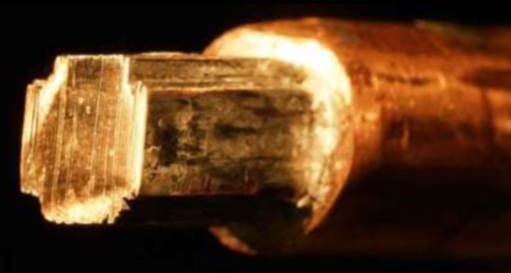The method commonly used nowadays to connect the cable sections consists of baring the superconducting cables at their ends and then soldering them to one another individually. However, this process is very time and cost intensive and is unsuitable for applications on an industrial scale. As an alternative, a connecting section made of copper is used into which the cable sections are laid from both sides so that they overlap. The disadvantage of this is the relatively large space required and the high resistance of the copper.
KIT scientists at the Institute for Technical Physics (ITEP) have developed a connector that consists of a copper body with recesses for the cables. Bands of superconducting material run along these recesses.
The cables that are to be connected are closely aligned with the superconducting bands, enabling power transmission from one section to the next virtually without any losses. In order to fixate the connection, a liquid metal alloy is used as solder, and the connector is closed with a lid.

Download technology offer and discover how we can work together
You can also get in touch with us if you need any support